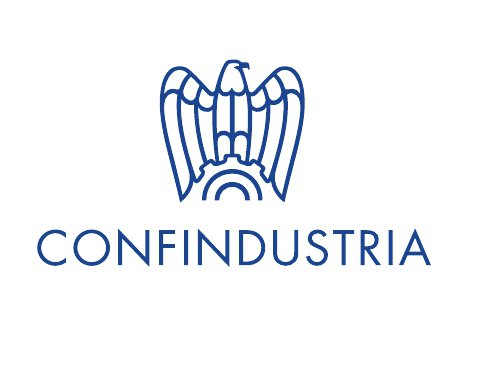The fashion industry is moving from self-regulation and the blah-blah of non-legally binding pactsto meaningful sustainability legislation, as evidenced by activity in France that’s pushing the agenda forward more so than other countries. The French government’s proactive stance is a sign of things to come in Europe and beyond, says Lisa Lang, Director Policy & EU Affairs Orchestrator, at the innovation catalyst Climate-KIC, co-funded by the European Union.
Several new pieces of legislation (and additional clauses from older laws) have come into play in the last couple of months, nudging brands towards early compliance with broader EU proposals down the line. This includes greater supply chain traceability, more transparent product labelling to curb greenwashing, and updates to the extended producer responsibility (EPR), aimed at cutting pre- and post-consumer waste.
France is not alone in seeking stricter sustainable fashion legislation — the US has been pushing for progress, too, through California’s Senate Bill 62, the proposed Fashioning Accountability and Building Real Institutional Change Act (known as the Fabric Act) and the New York Fashion Act. What sets France apart is the speed of change and the focus on waste. It is also applying EU laws earlier than neighbouring countries, laying a blueprint others may follow.
“The French laws are ambitious but realistic,” says Marie-Claire Daveu, Kering’s chief sustainability officer and head of international institutional affairs. “We are a global business, so we will apply the strictest regulations across the board anyway, but it would be nice to have this minimum standard
The EU has developed a strategy for sustainable and circular textiles. Experts say it is a strong starting point, but social impact should be core to sustainability legislation.
France’s focus on fashion is unsurprising, says Climate-KIC’s Lang. Deadlines are fast approaching for the EU’s sweeping climate targets — namely, the Green Deal and Fit For 55 — but action to date has been slow and limited. Against this backdrop — and with European Parliament elections coming up in 2024 — the European government (the Commission, Parliament and council) has started to push for minimal-effort, maximum-impact actions in the most polluting industries. “Construction has the top carbon footprint, followed by transport and fashion,” she explains. “Given that France has a high concentration of fashion brands, it’s the right way to move. In the electronic industry, one per cent of waste is considered overproduction. In the fashion industry, overproduction sits at 30-40 per cent. So the potential for impact is insane.”
However, Lang warns that change takes time, and says most French brands are not ready.
What changes? And when?
France doesn’t have the best track record with sustainability. According to the Ellen Macarthur Foundation, by 2016 the country was amassing 4.5 million tonnes of plastic waste in a single year, with 80,000 tonnes of that waste ending up polluting the natural environment. This made France the biggest plastic polluter in the Mediterranean region. It was also destroying €630 million worth of unsold products every year, a practice that generated between five and 20 times more greenhouse gas emissions than if those products were reused.
Now, waste is top of the agenda. In February 2020, France adopted its Anti-waste and Circular Economy Law, seeking to eliminate waste and pollution from the product life cycle, cradle to grave. The staggered commitments included phasing out single-use plastic by 2040, promoting better resource management and being more transparent with consumers. On 1 January 2023, a new part of this law came into force, making it forbidden to destroy unsold goods.
Another facet of the Anti-waste and Circular Economy Law, Decree No. 2022-748, was proposed in April 2022, and came into play in January 2023, making it compulsory for brands and retailers selling in France to provide consumers with more information about the environmental impact of products. The requirements vary by product category. For apparel and footwear, labels will need to include the percentage of recycled material by weight; details about the future recyclability of the product; the presence of harmful or hazardous substances as defined by the EU Reach regulation; a warning about microplastic shedding if the garment contains more than 50 per cent synthetic fibres by weight (recycled or virgin); and traceability information such as the country of origin for various steps of the manufacturing process, not just the finished garment. For apparel, this covers where the weaving, dyeing, printing and confectioning took place. For shoes, it means stitching, lasting and finishing.
The timeline for compliance depends on the size of the company. Those with a turnover of €50 million or more, bringing over 25,000 units of product onto the French market each year, will need to comply straight away. The decree will then be rolled out to companies with a turnover above €20 million and more than 10,000 units on the French market from January 2024, and those turning over more than €10 million with 10,000 units from January 2025.
This is all part of a wider effort to crack down on greenwashing. Since April 2022, France has had a blacklist in place for certain sustainability marketing jargon. Plastic products and packaging that are only compostable in an industrial unit cannot be marked “compostable”, otherwise they should be marked “do not throw away in the environment”. The terms “biodegradable” and “environmentally friendly” (or equivalent) are banned altogether. And, products with recycled content can only be labelled as “entirely recyclable product” if the weight of recycled content tops 95 per cent and it meets certain criteria for future recyclability (including the ability to be collected and sorted at state level; the absence of elements that would disrupt recycling processes or limit recyclability; and if there is already enough capacity to recycle the product at an industrial scale).
There is a short grace period to account for how far ahead fashion brands produce their collections: products manufactured or imported before 1 January 2023 will be exempt from the new rules. What happens if brands don’t comply is still unclear — officials say there will be financial penalties in place, but the details of this have yet to be confirmed publicly.
The Climate Resilience Law introduced in August 2021 will rank the sustainability of various products from A (the highest standard) down to E, although the methodology is still a work in progress. The EU is also working on this, and is currently exploring the much-debated Product Environmental Footprint (PEF) method, which experts have raised concerns about for its exclusion of renewability, biodegradability, biodiversity, social impacts or microplastic pollution.
These will both be consumer-facing rankings, but France is also developing an industry-facing scoring system to decide the financial incentives and penalties for its EPR scheme. France instigated an EPR policy in 2009, years ahead of the EU, but just started its latest five-year plan. Officials have €1 billion of government funding for the period to 2028, of which €150 million will go towards repair for shoes and garments, and €100 million will be allocated to encourage the re-use of clothing. According to officials, France has already increased the collection of used textiles by 40 per cent since the law was first introduced, and it plans to reach 60 per cent by 2028. The ranking — which decides how much brands pay towards the EPR fund based on the environmental credentials of their garments — is due to come into effect from 2024.
Liz Ricketts, co-founder of non-profit The Or Foundation, says the French government could go even further. Instead of just using EPR to fund reuse and repair schemes, and imposing eco-design criteria, it could also set targets to reduce the number of new garments produced, and fund textile waste management in the Global South, which will inevitably continue, she explains. This echoes calls from activists for future sustainable fashion legislation to be justice-led, with a more realistic, global approach.
Traceability takes centre stage
Traceability will be the biggest challenge if brands are to comply with new French legislation, says Shameek Ghosh, co-founder and CEO of supply chain transparency platform TrusTrace, whose traceability playbook is backed by Adidas. “To get this information, you need the name and address of your suppliers logged. Because it’s product-level regulation, both brands and retailers are responsible for it, although it’s unclear how much responsibility retailers will have. That greyzone will likely push people to act faster, to avoid liability.”
Kering has been gathering this information for almost a decade, having published its first consolidated environmental profit and loss (EP&L) report in 2015. But total transparency and traceability is still elusive in some parts of the supply chain, says Kering’s Daveu. “This is an ongoing process. As soon as you choose a raw material or fabric, you have to ask the supplier where it came from, how it was made and in what conditions. Every time you change your processes or materials, you have to re-ask all of these questions.” The process creates a virtuous cycle, she adds, as brands gain visibility over the blind spots in their current sustainability plans, and the potential for further improvements.
Gucci is one Kering brand affected by the current regulations, which don’t include leather goods. The brand has published “fiches produits” (product pages) on its e-commerce site and created a separate search function, so in-store sales associates can quickly find answers for enquiring customers. Searching the product code for Gucci’s Princetown women’s slipper, for example, tells the user that quilting, finish and assembly were carried out in Italy, and the product contains at least 4 per cent recycled materials. The group sustainability team acts as a “sparring partner” but brands have autonomy over how they achieve mandates, says Daveu. It’s not just legislators asking for this information. “These questions, and the expectation of more information, is coming from all stakeholders: customers, investors, financial analysts and employees,” says Daveu. Swiss designer Kevin Germanier, whose upcycling-led luxury label is based in Paris, says many brands have already been collecting this information for retail partners. “Buyers want to know what they’re buying, and customers want authentic brands. Truth is the new luxury,” he adds.
A representative from fellow Parisian brand Marine Serre says using vintage and deadstock fabrics can make traceability more complicated, even when you buy in bulk from trusted suppliers. While brands that source deadstock directly from mills and factories can say where they bought it from, it can be harder to trace to the yarn level, and harder still for those sourcing small quantities of deadstock material from mixed sources, because the origin, chemical heritage and even the fibre type could be unknown. For small brands, this is also a lot of data to compile, and finding the right external agency to process it can be tricky.
“We have enough guidance, we know the deadlines and we have the information, but it’s hard to find the right agencies to work with to calculate the data and display this to consumers in the right way,” the Marine Serre representative says. It is currently looking to add QR codes to its care labels to share information with customers, starting from January 2024, pre-empting legislation on digital product passports, which will soon become mandatory and will help track products from cradle to grave, as well as storing supply chain information.
“Buyers want to know what they’re buying, and customers want authentic brands. Truth is the new luxury.”
Some LVMH brands, including Loro Piana, have already started publishing the required information for the new decree and the luxury conglomerate is aiming for full compliance by summer 2023. LVMH is also trying to pre-empt the eco-design criteria. Under its Life 360 programme, it has committed to all new products being eco-designed and all strategic supply chains integrating traceability systems by 2030, and 100 per cent of new products coming with a customer information system by 2026. The conglomerate has launched a taskforce, combining expertise in sustainability, IT, operations and product development, to implement its plans.
According to Ghosh, many of TrusTrace’s brand partners have appointed a head of traceability to drive compliance, who reports to the head of sustainability as well as production and supply chain. This is key to making sustainability less siloed, he says.
Many brands will need to adjust their supplier base or incentivise (and fund) change at the supplier level to guarantee long-term compliance, Ghosh continues. “There will be more regulations down the line, so brands need the right calibre of suppliers to drive them through. This takes the most time. You will have to rewrite the policies and principles on which you have been buying and merchandising.”
Creating better infrastructure for compliance
Underpinning the new French legislation is a drive to digital that fashion isn’t necessarily ready for, say Frédéric Galinier and Salomé Roch, delegate director of industrial relations and public affairs, and legal and public affairs officer, respectively, at the French fashion industry body Fédération de la Haute Couture et de la Mode (FHCM). “These obligations can be administratively and technically challenging for some brands that may not yet have the structural maturity to comply with these requirements.”
Transparency and traceability are new territories for fashion, says Climate-KIC’s Lang. “Digital product passports scare the bejeezus out of brands. They have never had to comply like this before — it was not in their interests to track and trace.”
“Our feedback to brands is that they need to embrace digital product passports to capture all the information they need for product labels,” adds Debbie Shakespeare, senior director of sustainability, compliance and core product line management at packaging and labelling company Avery Dennison RBIS. Luxury brands including Prada, AZ Factory and Alexander McQueen have been experimenting with radio frequency identification (RFID) and similar near-field communication (NFC) technology for several years, while others add QR codes to product labels to enable future circularity.
According to Shakespeare, the American Apparel & Footwear Association (AAFA) has been lobbying the US Federal Trade Commission to review care labels and invite the inclusion of QR codes instead of or alongside the current information listed, a move Mexico already took in January 2022. The Federal Trade Commission declined to comment, but AAFA CEO Steve Lamar says government stakeholders have shown “intense interest” in the idea.
It’s not just digital infrastructure that is needed. Fashion also lacks an effective communication line between brands and legislators. The FHCM has participated in debates about the regulations, preparing position papers for public consultations. It is advocating for the consumer-facing labels mandated in the new decree to include the “non-physical durability” of products, as well as material longevity, including “delicacy, technical know-how and emotional value”. However, the industry does not have a global lobbying group protecting its interests. The FHCM says multiple points still need clarification, and several small designers report being completely unaware of the changes.
“Other industries have an organised network of lobbyists in Brussels who engage with politicians, organise roundtables, participate in workshops and make proposals,” explains Climate-KIC’s Lang. “This works because the European Commission has too high a workload for its capacity, and needs industry input to form policy.” One of the reasons fashion doesn’t have this is because it comes under the umbrella of culture and creative industries (that also includes architecture, movies and writers), which the European Commission only recognised in 2019. The European Fashion Alliance (EFA) is attempting to change this, but is still “in its infancy”, says Lang.
Without this, legislation has to be iterated over time, as is the case in France. An outline is formed but it takes a while to connect the dots. “The lawmakers don’t have the time to explain to the industry, which was frankly never interested in policy anyway,” says Lang.
Brands affected by the French legislation have a head start, but others across the EU will have to comply with similar rules soon — the biggest 50,000 companies by 2024, and the rest by 2026. “That will be painful for independent brands who are [already] struggling, and it will come as a shock to the system for bigger brands,” says Lang. “But, only with pressure and disaster do people change, so it unfortunately has to get worse before it gets better.”



